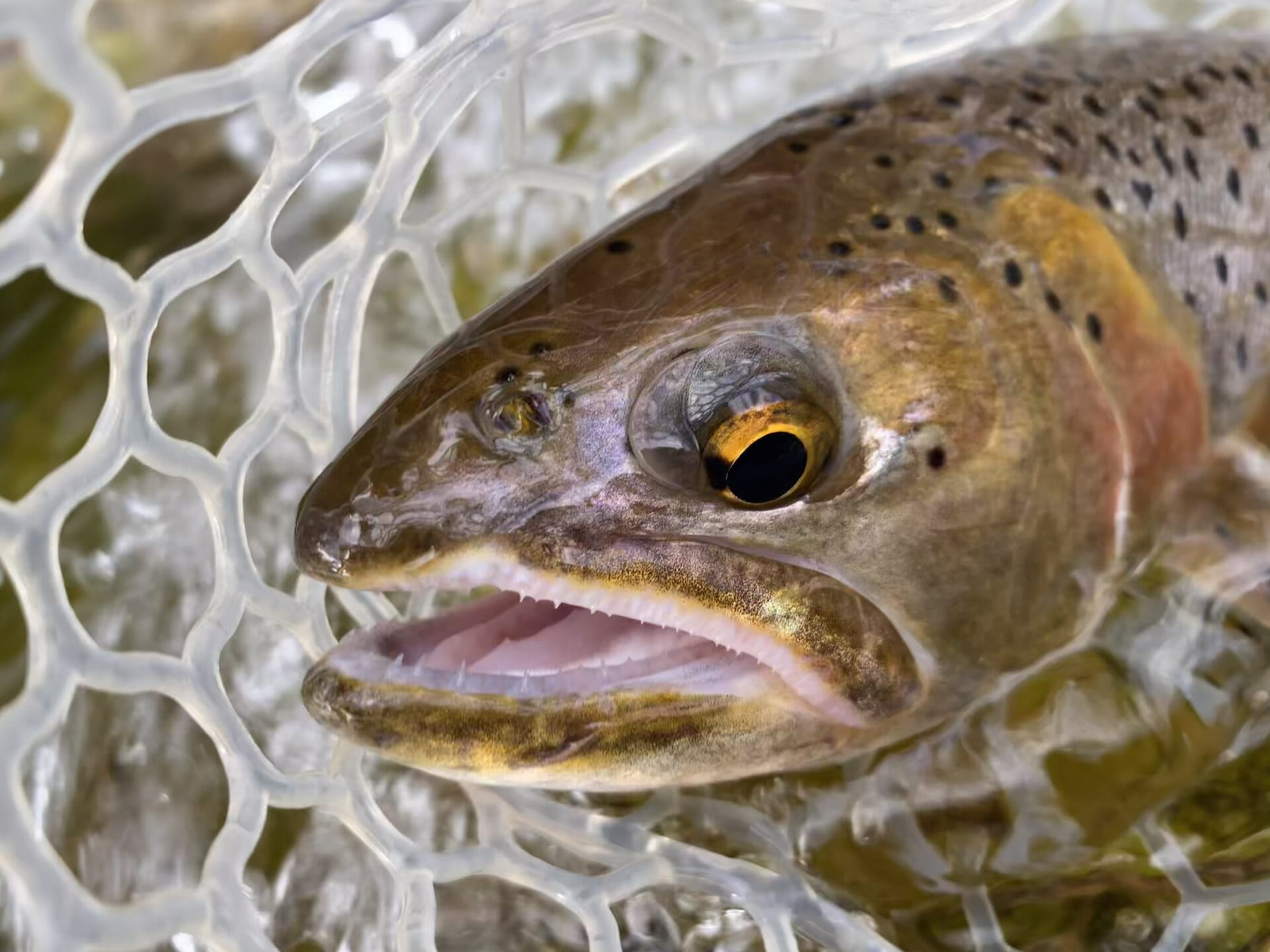Bonneville cutthroat trout (Oncorhynchus clarkii utah)
Species summary and status: The State Fish of Utah, the Bonneville cutthroat was historically found in the Bonneville Basin, including suitable habitat within Utah, Idaho, Wyoming, and Nevada. Although scientists believed pure strains of Bonneville cutthroat were extinct, a few isolated populations were discovered in Utah in the 1970s and biologists began an indepth search for the species, and cutthroat recovery became a priority across the West. In 1978, only six Bonneville Cutthroat Trout populations were known to exist in Utah. Field investigations by many agencies and groups increased known population numbers to 29 by the early 1990’s.
Spawning typically occurs during or after runoff which is usually during June. Both resident and fluvial populations of this subspecies still exist. Several factors have contributed to the decline of BRC, including introductions of non-native species, and habitat modification and fragmentation. Bonneville cutthroat trout tend to tolerate and survive in degraded habitats with warmer water temperatures better than other cutthroat trout.
Looking forward: Today, after an aggressive, coordinated recovery effort by a multi-agency conservation team, there are now at least 202 Bonneville cutthroat trout populations that occupy about 2,728 miles of stream habitat in 21 watersheds in Utah, Idaho, Nevada, and Wyoming. Of the 202 conservation populations, 55 percent are considered core populations. Conservation populations have at least 90 percent cutthroat trout genes and core populations have at least 99 percent cutthroat trout genes.
The Utah Division of Wildlife Resources is the lead agency in developing and implementing the Range-Wide Conservation Agreement for Bonneville Cutthroat Trout signed in 2000. The conservation of this subspecies has involved biologists at all levels and regions of many agencies and organizations. Funding and conservation efforts continue and have been instrumental in preventing this subspecies from being listed.
In Wyoming, Bonneville cutthroat trout (BCT) are native to the Bear River drainage in Wyoming. The distribution and abundance of BCT has declined from historical levels. It has been estimated that BRC occupied 6,758 miles of habitat within Utah, Idaho, Wyoming and Nevada. They currently occupy an estimated 2,380 miles of historical habitat (May and Albeke 2005). Interagency management plans have been developed for this species since 1993 which focused on population and habitat monitoring, increasing BRC range, watershed improvements, and developing public awareness (Remmick et al. 1993, Lentsch et al. 2000, May and Albeke 2005). This cutthroat trout subspecies is distinguished from other subspecies by a more uniform distribution of spots.
About 14 percent (899 miles) of the historical river and stream habitat occurs in Idaho. Within the Idaho portion, Bonneville cutthroat trout currently occupy an estimated 63 percent (565 miles) of the historically available river and stream habitat (Figure 1). Status for the remaining Idaho streams was classified as 30 percent unknown, 6 percent extirpated, and 1 percent non-fish bearing.
In Nevada, Bonneville cutthroat trout is the only trout species native to Eastern Nevada and Great Basin National Park. This fish represents a remnant of ancient Lake Bonneville, whose western shores reached Snake Valley during the Pleistocene epoch. With the shrinking of Lake Bonneville due to a warming climate, these cutthroats became stranded in high mountain streams where they survived for many years.
All data compiled from:
Western Native Trout Initiative
Utah Department of Wildlife Resources
Wyoming Game and Fish Department



